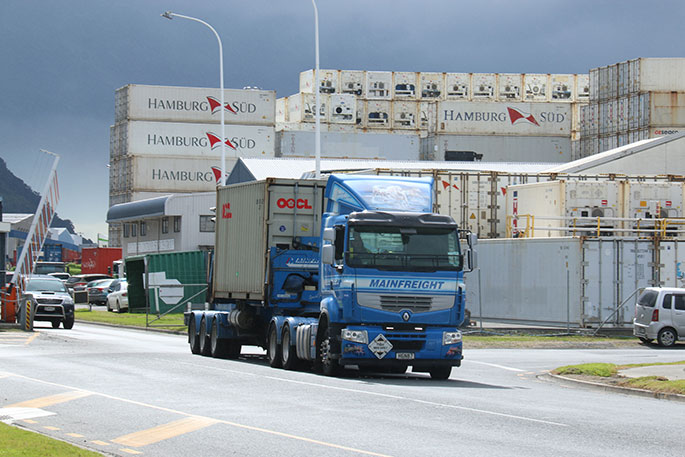Up to 65 young, quality truck driving graduates come off the production line in Tauranga each year but far too few to satisfy the needs of the road freight transport industry.
'We are just meeting our area needs,” 'says Dean Colville of Toi Ohomai Institute's specialist road transport training centre in Mount Maunganui. But then, on reflection, 'In fact, not even that. Because there's a shortage of thousands.” It's a national problem and an historic one.
For example, the amount of freight carried on our roads has increased 60 per cent since 2000 but the number of people with class 5 licences, the big rig drivers, has increased by only 10 per cent.
'The road freight transport industry regularly contacts Toi Ohomai wanting our students but we just don't have enough of them. And there aren't too many students left over at the end of the 16-week course who haven't got a job to go to straight away.”
When the students are out on work experience they get snaffled up. 'If they do half a good job they're generally picked up or referred on to someone who needs a driver.”
That's because it's an ageing industry. Since 2013 road freight transport has lost 3000 drivers to retirement, illness or injury. The problem just worsens as drivers get older. A survey three years ago found 85 per cent of 150 transport companies nationwide were short of drivers and there's no reason to believe this has improved.
'The problem, in a nutshell, is the graduated driver licensing system,” says Dean. 'The car system has stuffed up the transport system.”
A full car licence is a pre-requisite to enrol for the New Zealand Certificate in Road Transport Level 3 at Toi Ohomai.
'So they are 18 to 18 and a half years old and then there's a six-month stand-down before they're eligible for the 16-week course,” says Dean. 'And 6000 kids leave high school each year and the industry sees none of them because they don't have a full licence.” They don't qualify to learn to be truck drivers, so the disenchanted would-be truck drivers go elsewhere to work.
Dean says the system means most new drivers are coming into system in their mid to late 20s. 'Great having that maturity but we are losing most people in the 18 to 25 year range when they could be really beneficial to the industry, providing manpower that we lose year on year.”
However the pull to be part of the road transport industry is hard to shake. 'And they come back eventually,” says Dean. 'But most of our students are over 25 and they feel they've wasted several years getting into the industry they wanted to be in in the first place.”
There are a lot of initiatives aimed at resolving the problem.
Like the initiative driven by the government-led Sector Workforce Engagement Programme which aims to improve employers' chances of getting reliable and appropriately skilled staff at the right time and place.
It's talking with the industry and tertiary providers about the recruitment issues and how to resolve them. It's a push that hasn't happened in the road transport industry before.
'People are talking, people are working together and being smarter,” says Dean. But will it work?
'Truth be told, no. We are always going to have the problem of the driver licensing system. And until they change that and allow us to get younger drivers through quicker, nothing will change.”
There are other issues. 'The hours and wages also mean difficulties around attracting young people to an industry that is not looked upon favourable as a career path,” says Jon Reid, national transport sales manager for freight operator GBC Winstone.
But it's also an industry that has its attractions for young people. Ask Dean Colville.
'A lot of it's to do with lifestyle, being your own boss, travelling the country, the romantic notion of trucks,” says Dean. ”People just want to drive trucks, they have grown up watching trucks and want to be part of it.” And, he says, there are hundreds of different trucks jobs.
”You can do 20 hours a week or 70 hours a week; you can do night shift or early mornings; there are smaller trucks around town, the bigger trucks that operate regionally and then you have the bigger truck and trailer units running up and down the country.”
And because there is such a shortage of drivers they can almost pick and choose what they want to do and where. Dean has a different take on the money.
'It's $18 to $20 an hour for someone with not much experience, then up to $25 to $30.But if you are driving a milk or fuel tanker it could be up to $38 an hour. So work long and hard and potentially it's a good lifestyle and a very good earner.”
And there's lots of work to do. Thirty-two per cent of the country's freight is carted on roads in the Bay of Plenty and Waikato. Now SWEP and the industry is focused on drawing 1000 new drivers into the road freight transport industry to help move that product and fix a problem that just won't go away.

